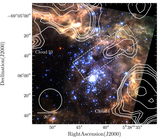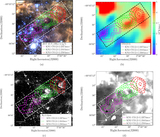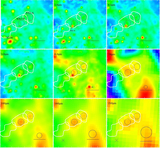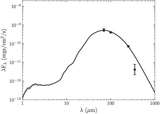Image Details
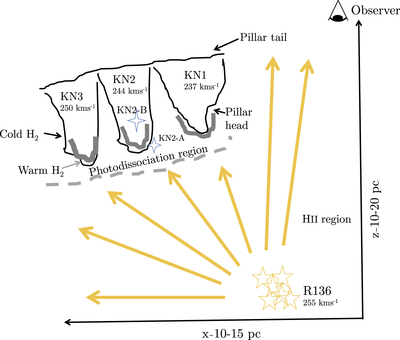
Caption: Figure 8.
Schematic of the stapler nebula. The model is flattened in the y direction, with the direction of the observer on the z-axis indicated. Ionizing radiation from the massive R136 stars (yellow symbols, with the mean radial velocity given in the frame of the local standard of rest) photoionizes (indicated by yellow arrows) the blueshifted cold molecular gas lying in pillar-like features (solid lines), leading to the observed CO(2–1) line widths. This leads to a photoionization region in the head of the pillar from where the Brγ emission arises (gray thick lines). The tail of the pillar is comparatively colder, and is where the cold molecular gas is detected. The individual molecular clouds are identified along with their central velocities in the frame of the local standard of rest. In KN2, we detect the candidate protostar KN2-B (indicated by the large blue star), which is likely a forming high-mass star. The previously known YSO candidate KN2-A is also shown as a small blue star.
Copyright and Terms & Conditions
© 2018. The American Astronomical Society. All rights reserved.


